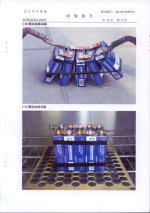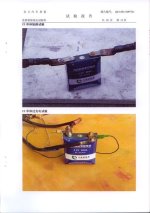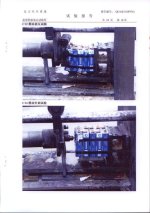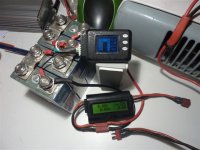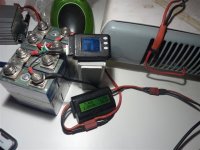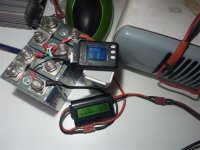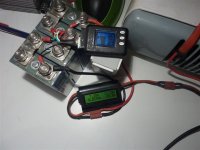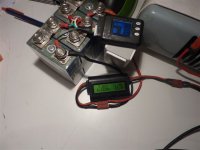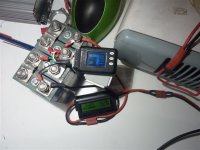Hi,
I am learning a lot from this forum and would like to share a new cell I came across.
The company is a Chinese company (surprise!) named cyliyuan.
http://www.cyliyuan.com/en/index.asp
They also sell super capacitors.
I got samples of their 10Ah cells and tested the cells as a 48V (16S) 10Ah pack on my bicycle (30A peak) and on a bench discharger I built (@ 40A ~2000W).
The cells show better performance than 38120S headway I ordered as well. the pack stayed above 48V for most of its 4C discharge and had more than 10Ah to put. I don't have actual numbers written but I still have 4 cells I can test (sold the pack).
I was talking to a guy named Wang there,
Here are some answers I got from Wang:
"For your questions, pls. check our answers below.
1. what is the chemistry you use? LiFePo4? is it combined with a super capacitor?
The main material in positive pole is LiFePo4, we combined super capacitor with battery as like the form of atoms, for example, we put so many tiny super capacitors inside the battery.
2. the size of 10Ah and 12Ah are the same in the pdf? does 120mm include the threaded ends?
Not same, the size of 10Ah is W*L*H=27*70*88, and 120mm not include the threaded ends.
3. is the case of the battery hard?
The case of the battery can be desighed as required upon quantity order.
4. Do you have safety tests for it? overcharge? over heating?
Yes, we passed mandatory test of our nation at the first time, and also we passed entrust test by authority. Which include overcharge and overdischarge test, overheat, squeeze, prick, vibration, drop and etc, all the results show that there was no any fire or explosion or leakage.
Pls. find some test photos of our products.
5. which chargers can you use? CC/CV LiFePo4 chargers?
Yes, first charge by constant voltage and then by constant current. our battery can be charge by 2C current.
If have any other questions, pls. tell us!"
I would like to mention I really liked the cell connecting strips they sent me - they are made of many layers of thin copper which makes them flexible - this helps not stressing the threaded poles of the cell and reduces "vibration bolts loosing" effect.
Wang's contact email is: hdwang21@yahoo.com.cn
I am learning a lot from this forum and would like to share a new cell I came across.
The company is a Chinese company (surprise!) named cyliyuan.
http://www.cyliyuan.com/en/index.asp
They also sell super capacitors.
I got samples of their 10Ah cells and tested the cells as a 48V (16S) 10Ah pack on my bicycle (30A peak) and on a bench discharger I built (@ 40A ~2000W).
The cells show better performance than 38120S headway I ordered as well. the pack stayed above 48V for most of its 4C discharge and had more than 10Ah to put. I don't have actual numbers written but I still have 4 cells I can test (sold the pack).
I was talking to a guy named Wang there,
Here are some answers I got from Wang:
"For your questions, pls. check our answers below.
1. what is the chemistry you use? LiFePo4? is it combined with a super capacitor?
The main material in positive pole is LiFePo4, we combined super capacitor with battery as like the form of atoms, for example, we put so many tiny super capacitors inside the battery.
2. the size of 10Ah and 12Ah are the same in the pdf? does 120mm include the threaded ends?
Not same, the size of 10Ah is W*L*H=27*70*88, and 120mm not include the threaded ends.
3. is the case of the battery hard?
The case of the battery can be desighed as required upon quantity order.
4. Do you have safety tests for it? overcharge? over heating?
Yes, we passed mandatory test of our nation at the first time, and also we passed entrust test by authority. Which include overcharge and overdischarge test, overheat, squeeze, prick, vibration, drop and etc, all the results show that there was no any fire or explosion or leakage.
Pls. find some test photos of our products.
5. which chargers can you use? CC/CV LiFePo4 chargers?
Yes, first charge by constant voltage and then by constant current. our battery can be charge by 2C current.
If have any other questions, pls. tell us!"
I would like to mention I really liked the cell connecting strips they sent me - they are made of many layers of thin copper which makes them flexible - this helps not stressing the threaded poles of the cell and reduces "vibration bolts loosing" effect.
Wang's contact email is: hdwang21@yahoo.com.cn


